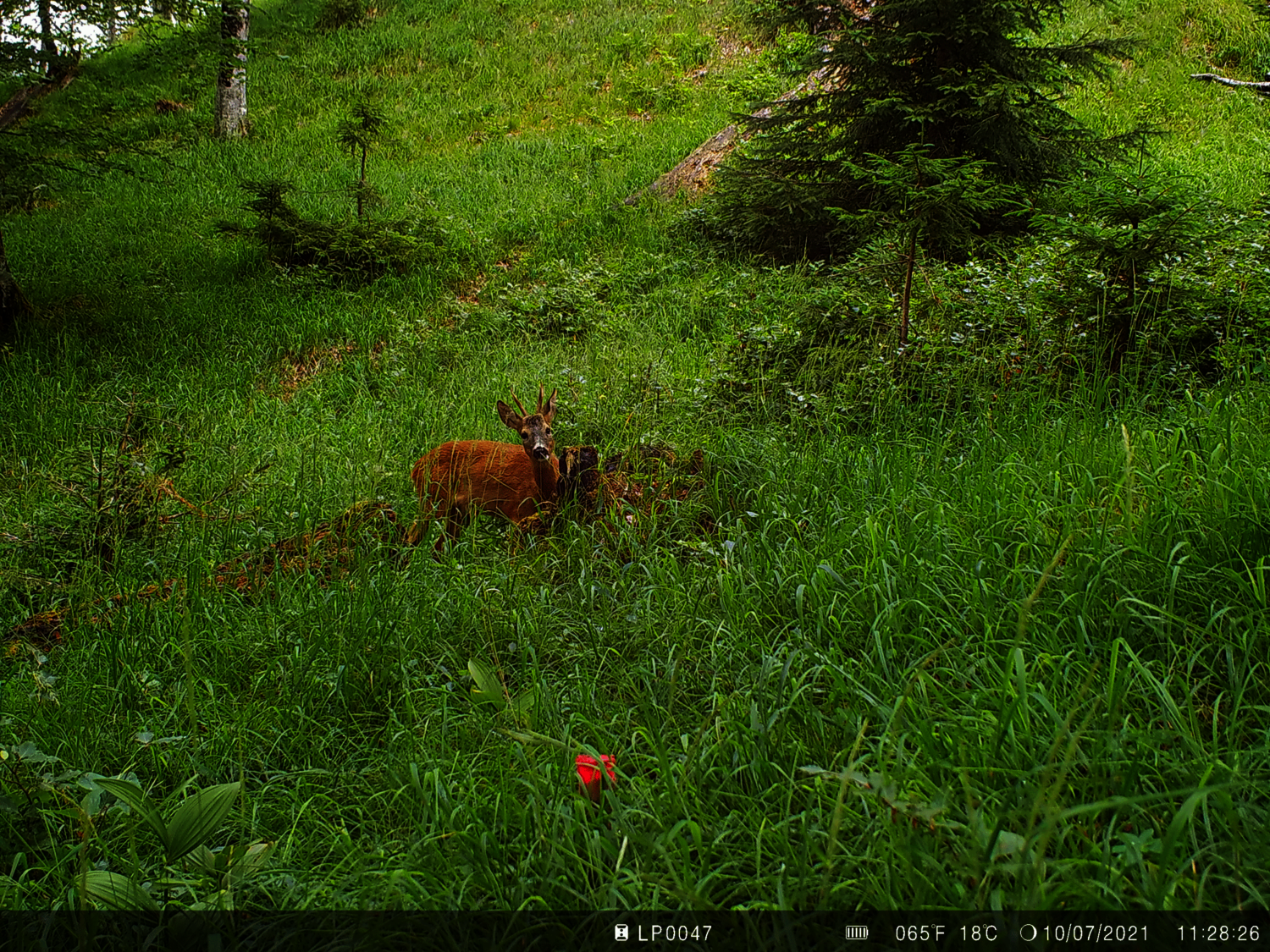Less nitrogen, more diversity through herbivores
The nitrogen content in forests determines whether herbivores enhance or reduce plant diversity. This is shown in a new study by the German Centre for Integrative Biodiversity Research, in which the Umweltbundesamt (Environment Agency Austria) played a major role and contributed analyses from the Zöbelboden research site. The study was published in December in the journal 'Nature Communications'.

Animals such as sheep or cows can increase biodiversity in meadows by strengthening small, less competitive plant species. They do this by grazing off highly competitive species, freeing weaker ones that compete with them for nutrients and habitat from their overbearing neighbors. This reduces competitive pressure and even these weaker species can survive alongside very competitive plant species, increasing biodiversity. Whether and how this mechanism works in European forests has now been analyzed by a team of researchers led by the German Centre for Integrative Biodiversity Research and published in December in the journal 'Nature Communications'. The authors, including experts from the Environment Agency Austria, found that there is a direct link between the role of herbivores and nitrogen input into the forest ecosystem.
Nitrogen enters the air through combustion processes or through loss during agricultural fertilization, and from there it returns to ecosystems. In Europe, more than half of the area of particularly sensitive habitats is affected by excessive nitrogen input, such as forests, extensively used meadows or peatlands.
Nitrogen and light exposure promote high-growth species
Whether forest-dwelling herbivores such as deer promote or reduce the occurrence of small, rare, often endangered plants depends on the degree of over-fertilization by nitrogen from the air. In areas with low nitrogen inputs, grazing by more competitive species has a predominantly positive effect and rare species increase. In areas where nitrogen has already led to considerable eutrophication, the high-growth species that benefit from this eutrophication can no longer be pushed back. On the contrary, pushing back the shrub layer by herbivores increases light incidence on the forest floor and improves the living conditions of plant species already supported by nitrogen even more. Rare species thus come under even greater pressure, and their numbers are reduced. The study shows that emissions of nitrogen must be further reduced in order to preserve the biodiversity of European forests.
Long-term data from Austria
For the study "Divergent roles of herbivory in eutrophying forests", the researchers analyzed measurement series on long-term vegetation changes from 52 areas in 13 European countries. The Austrian data come from the Zöbelboden research site in the National Park Kalkalpen in Upper Austria. The Environment Agency Austria has been conducting comprehensive ecosystem and air quality monitoring there since the 1990s, examining hundreds of other parameters in addition to vegetation data. The results have already been incorporated into more than 70 scientific book contributions, articles and reports and provide, among other things, important insights into the consequences and successes of air pollution control.
Further information
Long-Term Ecosystem Research in Europe
Research Infrastructure for Carbon, Water & Nitrogen (LTER-CWN)
